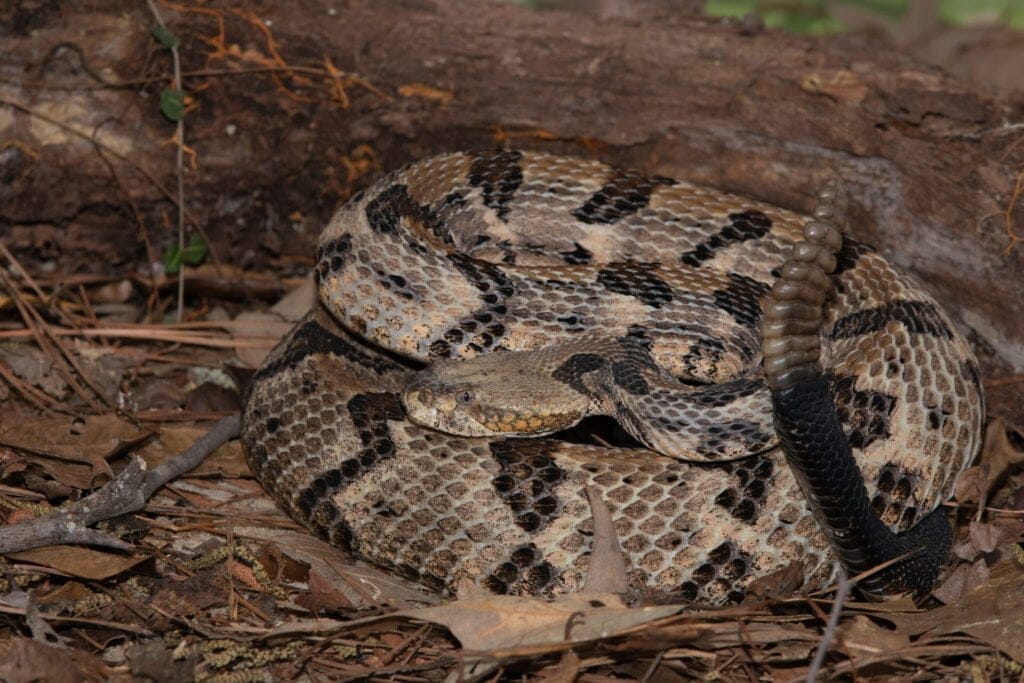Rattlesnake Bites and Dogs: How to Protect Your Dog
The thought of my dog getting bitten by a rattlesnake is terrifying. When the weather warms up, our pups are way more likely to run into snakes while sniffing around outside.
Quick action is crucial if a rattlesnake bites your dog. Knowing the signs and what to do right away can really change the outcome.

Out on hikes or even just chilling in the backyard, keeping your eyes peeled for snakes is a must. If the worst happens, your dog might start swelling up, look like they’re in pain, or have trouble breathing.
Acting fast and getting to the vet immediately can help manage those symptoms and stop things from getting worse.
It’s on us to keep our dogs safe. Learning a bit of first aid for snake bites and having an emergency plan can make all the difference.
Key Takeaways
- Quick action is crucial if your dog is bitten by a rattlesnake.
- Look for signs like swelling, pain, or breathing issues.
- Seek immediate veterinary care for the best outcome.
Understanding Rattlesnake Bites
If you live in an area with rattlesnakes, running into them is a real risk. Knowing how to spot them, where they like to hang out, and what their venom does are the first steps to keeping our dogs safe.
Identifying a Rattlesnake
Spotting a rattlesnake in the wild isn’t always easy. They’re pit vipers, so look for a triangular head and those heat-sensing pits between the eyes and nostrils.
Most have dark and light bands near the tail, which lead to that famous rattle. When they feel threatened, they’ll shake it as a warning.
Unlike the harmless garter snake, rattlesnakes have vertical, slit-like pupils and big, movable fangs. Not every venomous snake rattles – copperheads and cottonmouths are sneaky like that, so don’t let your guard down. And even rattlesnakes won’t always rattle, so be aware!
Rattlesnake Habitat and Behavior
Rattlesnakes love dry, rocky spots, forests, and grasslands. They’re sunbathers, so you might see them stretched out on warm rocks or right on the trail.
They’d rather avoid us, but if they feel stuck, they’ll defend themselves. Early morning and late evening, when it’s cooler, are their favorite hunting times.
They go after small mammals, birds, and sometimes other reptiles. If you’re hiking with your pup in rattler territory, stick to marked trails and keep your dog on a leash. It seriously lowers the odds of a surprise encounter.
Types of Venom and Their Effects
Rattlesnake venom is nasty stuff. There are two main types: neurotoxins and hemotoxins.
Neurotoxins mess with the nervous system and can cause weakness, paralysis, or even loss of coordination. Hemotoxins go after blood and tissues, so think of pain, swelling, and ugly bruising.
Each rattlesnake species mixes up their own venom recipe. For instance, some Western rattlesnakes have both neurotoxins and hemotoxins, so their bites are especially rough.
Unlike a nip from a non-venomous snake, these bites can make your dog nauseous, change their heart rate, or make it hard to breathe. There is such a thing as a rattlesnake vaccine for dogs, and while it might help, it’s not a substitute for getting to the vet ASAP. If your dog gets bitten, don’t wait – call for emergency help right away.
First Aid for Rattlesnake Bites in Dogs

Rattlesnake bites are a big deal, but knowing the right first aid steps can save your dog’s life. Let’s break down what to do, what not to do, and how to get ready for the vet.
Immediate Actions Post-Bite
First, try to stay calm. I know, easier said than done, but your dog needs you thinking straight.
Move your dog away from the snake right away – use a leash if you have one. Try to keep your pup as still as possible to slow the venom’s spread.
Check the bite area. You’ll probably see swelling, bleeding, and your dog will be in pain. If it’s safe, try to remember what the snake looked like; this will help the vet.
Keep the bite site below your dog’s heart as you get ready to go. If your dog can’t walk, carry them to limit movement.
Call your vet or the emergency vet to let them know you’re coming. Not all veterinary offices have antivenom on hand, so always call and make sure it’s available before you waste precious time. You may need to call around.
What To Avoid Doing
There are a few things you shouldn’t do. Putting ice on the bite seems smart, but it can actually harm your dog.
Forget those old movie tricks like cutting the wound or sucking out the venom – they don’t work and just make things worse. No tourniquets either. They can cut off blood flow and cause more damage.
Don’t give pain meds unless your vet says so. Human meds can be dangerous for dogs. Also, don’t let your dog run around or get worked up. More movement means the venom spreads faster.
Keeping them calm and still is important until you’re at the vet.
Preparing for Transport to the Vet
Ideally, know ahead of time where the nearest emergency vet is and have their number saved. In the car, have your dog rest on the seat or floor, keeping the bite area lower than their heart.
If you’re not driving solo, have someone else drive so you can watch your dog – look for signs of shock like pale gums or rapid breathing. When you get there, be ready to tell the vet everything – when it happened, what you saw, and how your dog’s been acting.
Medical Treatment and Recovery

If a rattlesnake bites your dog, you’ve got to move fast. From the first vet check to antivenom and recovery, every step matters.
Veterinary Assessment
Get your pup to a veterinary emergency clinic immediately. A quick check helps the vet see how bad the bite is.
The vet will look for tissue damage, necrosis, and check blood flow. Blood tests and physical exams show how the venom is affecting your dog, so the vet can pick the right treatment.
Usually, the vet starts IV fluids to keep your dog hydrated and manage shock. Pain meds help your buddy feel better, and antibiotics can help prevent infection.
Antivenom and Medication
Antivenom is the big one – it cancels out the snake venom and gives your dog a much better shot at recovery. The vet gives it through an IV.
Pain meds are important for comfort. Sometimes steroids or antihistamines get added to reduce swelling or allergic reactions.
If infection is a risk, your vet will use antibiotics. IV fluids keep your dog stable. If there’s a lot of tissue damage, sometimes surgery is needed. Always follow your vet’s instructions for the best shot at a good outcome.
Post-Treatment Monitoring
After the crisis, it’s all about post-treatment monitoring. This is when you watch for any weird symptoms – swelling, changes in behavior, anything off.
Serious bites might mean your dog stays in the hospital for a bit. If not, you’ll keep an eye on them at home. Watch for blood flow issues or signs of necrosis.
Complications and Prognosis
If your dog gets bitten by a rattlesnake, knowing the risks and what affects recovery is huge. Let’s look at the most common complications and what shapes your dog’s prognosis.
Common Complications
Rattlesnake venom often stops blood from clotting, so you might see uncontrolled bleeding and swelling.
Redness, bruising, and serious pain usually show up around the bite. Some dogs struggle to breathe after a bite, since the venom can mess with their lungs.
Weakness and even paralysis can happen if the venom hits the nervous system hard. Left untreated, those symptoms can lead to collapse or worse.
The venom can also mess with the immune system, making your dog more likely to get infections or have other problems during recovery.
Factors Affecting Recovery
Recovery depends on a bunch of things, starting with the size and location of the bite. Smaller dogs and bites on the trunk usually have a tougher time bouncing back.
The type of rattlesnake really matters, too. Some, like the Mojave rattlesnake, pack a stronger venom punch, so the road to recovery gets longer and rougher.
How fast you get treatment makes a big difference. If you can get antivenom to your pup quickly, you’re giving them a much better shot at healing.
Antivenom neutralizes the toxins and helps stop more tissue damage. But timing’s everything – waiting too long can make things a lot worse.
Your dog’s overall health before the bite also plays a role. Older dogs or pups with health issues might need more time and TLC to recover.
Preventive Measures and Dog Training
Keeping our dogs safe from rattlesnake bites takes some planning and the right training. There’s training to help dogs avoid snakes, the rattlesnake vaccine, and a few hiking tips you might want to keep in mind.
Rattlesnake Avoidance Training

Rattlesnake avoidance training teaches dogs to spot and steer clear of snakes using sight, smell, and sound. Trainers use real rattlesnake scent to help dogs learn what to avoid, mixing in positive reinforcement and commands like “go away.”
Some programs use shock collars; the timing and intensity have to be just right. A good trainer will keep things safe and effective. This is the route we went, and we’ve since come across two rattlesnakes on hikes. Piper wanted absolutely nothing to do with them. In fact, she made a huge, wide circle around the snakes. We used a great company called Get Rattled. We’re in no way affiliated, just happy customers.
If that route bothers you, there are positive-only snake avoidance options out there, too. However, we’re unable to vouch for their effectiveness.
The Rattlesnake Vaccine
The rattlesnake vaccine is another handy tool. It won’t make your dog immune, but it can buy you some time to get to the vet if the worst happens.
Usually, dogs get two doses a month apart, then a yearly booster. It’s especially smart for dogs who love the outdoors, especially in rattlesnake country. Just a heads-up: this vaccine only works for North American rattlesnakes, not other venomous snakes.
There is a great Facebook group called ‘National Rattlesnake Support’. Only veterinarians are allowed to respond to and answer questions. I’ve seen many of the vets in this group state that the vaccine is not effective; however, it certainly can’t hurt if you’re concerned about rattlesnake bites.
Safe Hiking With Dogs
Hiking with our dogs is awesome, but you’ve got to be careful about snakes. Leashing your dog is a must – no exploring tall grass or poking around rocks where rattlers love to hide.
Stick to marked trails and try to avoid hiking at dawn or dusk when snakes are most active. Give the area a quick once-over for snake habitats before heading out. If you’re vigilant and prepared, you can still enjoy the outdoors safely, even in snake territory.
Understanding Your Dog’s Behavior After an Encounter
If your dog has a run-in with a rattlesnake, you’ll probably notice some changes in their behavior. Knowing what to look for can help you help them recover and get the care they need.
Signs of Anxiety or Distress
After something scary like a snake bite, dogs can act differently. You might see trembling, lots of drooling, or even just weird drooling that’s not normal for your pup.
They might start avoiding spots that remind them of what happened. Eating habits can change, too – some dogs lose their appetite or just pick at their food.
If your dog starts whining or barking more, that could be their way of saying they’re not okay. Restlessness is another big clue. If your dog can’t settle down, they’re probably feeling off.
Spotting these early means you can reach out for professional help sooner.
Physical Reactions to Look Out For
Snake bites can cause a bunch of physical symptoms. Swelling or small puncture wounds near the bite are common, but sometimes it takes a while for these to show up.
Bruising and weird color changes around the bite are normal. Some dogs might get muscle tremors or, in really bad cases, seizures, which is a straight-to-the-vet situation.
Vomiting and diarrhea can happen as their bodies react to the venom. Watch for drooling and dilated pupils, too. If your normally bouncy dog suddenly seems wiped out, that’s a red flag.
Keeping an eye out for these signs lets you know when it’s time for another vet visit or more treatment.
The Financial Aspect of Rattlesnake Bites

Rattlesnake bites aren’t just scary – they can hit your wallet hard, too. Let’s talk about what you might pay and how pet insurance fits in.
Costs of Treatment
Treating a rattlesnake bite gets expensive fast. The emergency vet visit alone usually costs $100 to $200 just for the initial exam.
Antivenom is the big one – expect to pay $500 to $1,500 per vial, and sometimes your dog will need more than one.
If your dog has to stay at the hospital, that’s another $1,000 to $5,000, depending on how long and how sick they are. Add in bloodwork, corticosteroids, fluids, and oxygen, and you’re easily looking at a bill in the thousands.
Pet Insurance and Coverage
Pet insurance can really save your bacon here. Most plans cover emergency care and hospitalization, but double-check if antivenom is included – not all policies have it.
Monthly premiums usually run $30 to $50, which isn’t nothing, but it’s a lot less than a massive vet bill. Look for policies that cover all the big treatments, like bloodwork and corticosteroids.
Always read the fine print – pay attention to coverage limits and waiting periods so you’re not caught off guard. Having insurance can give you peace of mind when things go sideways.
Frequently Asked Questions
Snake bites are scary, but knowing what to do can make all the difference. Here are some real-world tips and answers to stuff people always wonder about.
What steps should I take if my dog is bitten by a rattlesnake?
First, take a deep breath and try to stay calm. Get your dog away from the snake right away – don’t give it a chance to bite again.
Call your vet and head to the clinic ASAP. Skip home remedies like cutting the wound or putting ice on it – they don’t help and can actually make things worse.
How can I tell if my furry friend has been bitten by a rattlesnake?
Look for swelling, small puncture marks, and bruising where the bite happened. Your dog might whimper, limp, or just seem like they’re in pain.
Other things to watch for: lethargy, drooling, and trouble breathing. If you see any of these, get to the vet right away.
What are the chances of my dog making a full recovery after a rattlesnake bite?
Most dogs do pretty well if they get treated quickly. Size, how much venom got in, and how fast you get help all matter.
Antivenom and other treatments can really boost your dog’s chances of bouncing back.
Is it true that dogs can sometimes shake off a snake bite, or is that just a myth?
That’s a risky myth. Snake bites are always serious business. Even if your dog looks okay at first, the venom can do damage over time.
Don’t mess around – always get professional help.
Just curious – what’s the deal with home remedies for doggie snake bites?
Home remedies aren’t safe for snake bites. Some can even make things worse.
Your best move is to get your dog to the vet as fast as you can. Vets have the right tools to handle the situation.
Could a rattlesnake bite leave my pooch with long-term health issues?
Yeah, it’s definitely possible. Even with good treatment, some dogs end up with tissue damage or infections that just don’t go away quickly.
Sometimes, nerve or muscle injuries stick around for a while. Honestly, it’s a good idea to keep up with regular vet visits to catch any lingering problems early.








